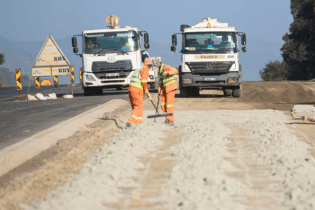As the Fourth Industrial Revolution ushers extraordinary technologies and the world continues to place a greater emphasis on vehicles, innovation and mobility, the way we conceptualise and build our roadways is set for a major change.
This is the view of Anton Hartman, Technical Director for Pavements and Materials at Aurecon who argues that in our journey to the autonomous future, we have forgotten to transform our roads. “What’s the use of having smart cars if our roads are dumb? With more opportunities for innovative reinvention than ever before, is it quite possible that we are coming to the end of roads as we know them?” Hartman asks in Aurecon’s latest Just Imagine blog post. “Coupled with the current wave of innovation to design for sustainability, there is an equal imperative to see our new and old infrastructure becoming smarter,” he says.Digitally responsive networks
With autonomous vehicles increasingly dominating streets and highways, roads need to act as an intuitive and technologically integrated system that can host these new transport innovations. “In the future, roads will no longer be seen simply as empty conduits to move vehicles from one place to another, but environmentally regenerative, digitally responsive networks. “Magnetisable concrete, for example, is the latest invention that could potentially promise to revolutionise the Electric Vehicle (EV) industry. By embedding a highly controllable and resident coiled technology into a designated lane, EVs can charge up their vehicles on the go. The result is a streamlined highway, void of charging stations and an unbeatable value for money EV industry,” Hartman explains.Smart materials
Turning to the construction of roads, Hartman points out that new construction materials now offer fascinating alternatives that have inbuilt renewability capabilities. “Dr Rajagopalan Vasudevan, dean and professor of chemistry at India’s Thiagarajar College of Engineering, found that plastic, when molten and mixed with a stone and bitumen mix, has been proven to be an excellent binder and creates a stronger and longer-lasting road.” An estimated 100 000 km of roads in India are actually made up of plastic and which has inspired companies to follow suit and build roads in places like the UK, Canada, Australia and New Zealand.Similarly innovations like self-healing concrete are extending the lifespan of old concrete, with self-activating limestone-producing bacteria that congeal in pavement cracks as they form,” he explains.








